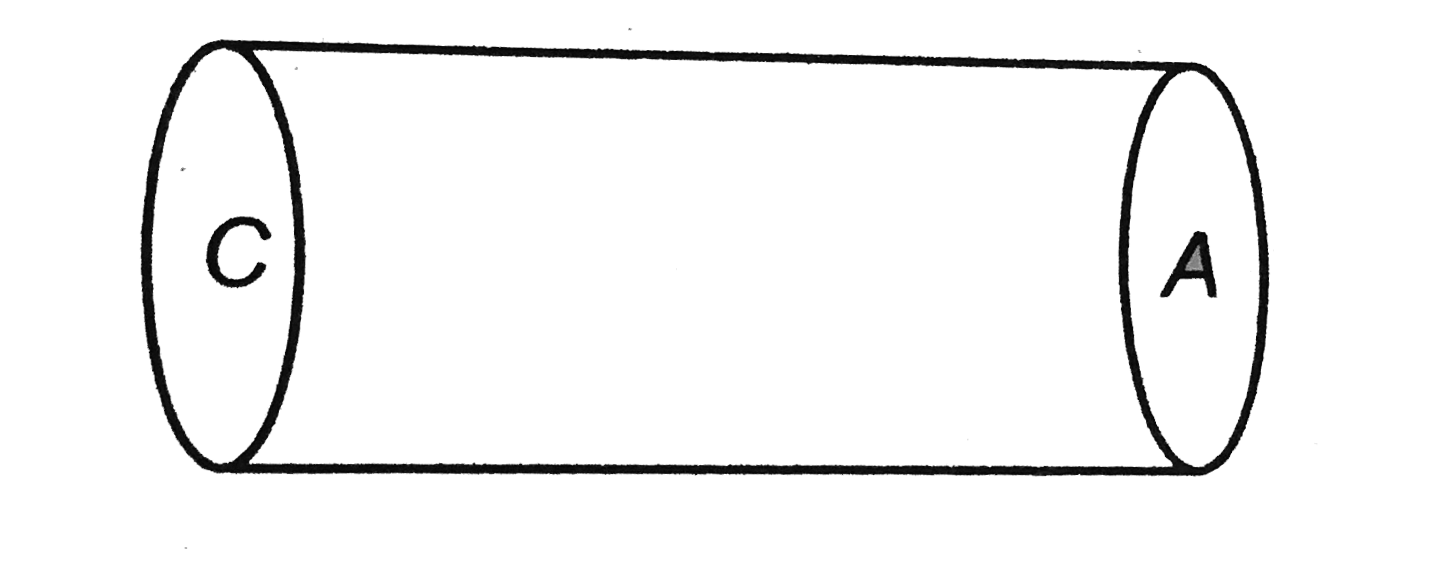A charged body has an electric flux ϕ associated with it. The body is now placed inside a metallic container. The flux ϕ, outside the container will be
Zero
Equal to ϕ
Greater than ϕ
Less than ϕ
The correct Answer is:B
To solve the problem, we need to analyze the situation using Gauss's law, which relates the electric flux through a closed surface to the charge enclosed by that surface.
1. Understanding Electric Flux: Electric flux (Φ) is defined as the product of the electric field (E) and the area (A) through which it passes, and it is given by the formula:
Φ=∫→E⋅d→A
According to Gauss's law, the electric flux through a closed surface is proportional to the charge (Q) enclosed within that surface:
Φ=Qϵ0
where ϵ0 is the permittivity of free space.
2. Initial Condition: The problem states that there is a charged body with an electric flux Φ associated with it. This means that there is a certain amount of charge Q enclosed by a surface around this charged body.
3. Placing the Charged Body Inside a Metallic Container: When the charged body is placed inside a metallic container, the container itself will respond to the electric field created by the charged body. However, since the container is metallic, it will redistribute its charges in such a way that the electric field inside the conductor becomes zero.
4. Analyzing the Flux Outside the Container: The key point is that the charge enclosed by the outer surface of the metallic container does not change. The total charge Q remains the same, as the metallic container does not add or remove any charge; it only redistributes it.
5. Applying Gauss's Law to the Container: For any Gaussian surface outside the metallic container, the charge enclosed is still Q (the charge of the body inside). Therefore, the electric flux Φ outside the container can be calculated using Gauss's law:
Φoutside=Qϵ0
Since the charge Q has not changed, the flux outside the container remains equal to the original flux Φ.
6. Conclusion: The electric flux outside the metallic container will be equal to the electric flux associated with the charged body before it was placed inside the container.
Thus, the answer is:
Φoutside=Φ
Final Answer:
The flux Φ outside the container will be equal to Φ.
---
Φ=∫→E⋅d→A
According to Gauss's law, the electric flux through a closed surface is proportional to the charge (Q) enclosed within that surface:
Φ=Qϵ0
where ϵ0 is the permittivity of free space.
Φoutside=Qϵ0
Since the charge Q has not changed, the flux outside the container remains equal to the original flux Φ.
Φoutside=Φ
The flux Φ outside the container will be equal to Φ.
Similar Questions
A charged body has an electric flux F assoclated with it. Now if the body is placed inside a conducting shell tthen the electric flux outside the shell is
View SolutionTotal electric flux associated with unit positive charge in vacuum is
View SolutionA hollow cylinder has a charge qC within it. If ϕ is the electric flux in unit of voltmeter associated with the curved surface B the flux linked with the plane surface A in unit of voltmeter will be

View SolutionA hollow cylinder has a charge qC within it. If ϕ is the electric flux in unit of voltmeter associated with the curved surface B the flux linked with the plance surface A in unit of voltmeter will be

View Solutiona hemispherical hollow body is placed in a uniform electric field E. the total flux linked with the curved surface is

View Solutiona hemispherical hollow body is placed in a uniform electric field E. the total flux linked with the curved surface is

View SolutionA Gaussian surface in the cylinder of cross-section πa2 and length L is immersed in a uniform electric field E with the cylinder axis parallel to the field. The flux ϕ of the electric field through the closed surface is
View SolutionIf the electric flux entering and leaving an enclosed surface respectively is ϕ1 and ϕ2, the electric charge inside the surface will be
View SolutionA point charge is placed at the centre of spherical Gaussian surface. Is electric flux ϕE changed if
(a) The sphere is replaced by a cube of same or different volume ?
(b) The charge is moved off-centre in the original sphere, still remaining inside ?
( c ) The charge is moved just outside the original sphere ?
(d) A second charge is placed near the outside to the origianl sphere ?
(e) A second charge is placed inside the Gaussian surface ?
View SolutionFour dipoles each of magnitudes of charges ±e are placed inside a sphere. The total flux of E coming out of the sphere is
View Solution
